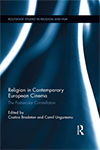- Author(s): Noa Steimatsky
- When: 1998-04
- Where: The Yale Journal of Criticism
Winter 1960-61 marks the beginning of Pier Paolo Pasolini's work as a filmmaker; it is also the time in which he began to travel. Filmmaking and traveling were to become closely linked in the following years, when the search for locations itself became a key creative moment of the filmwork, while the cinema in turn served as a pretext for further exploration of foreign cultures and remote landscapes, from the margins of Europe (Anatolia, Palestine) onward to the Arabian peninsula and Africa. Even a superficial glance at the films reveals this mutual implication of the two activities -- filmmaking and travelling -- as fundamental to Pasolini's work. This ambition appears dormant in such early works as Accattone and Mamma Roma; but it can be identified even in these films' exploration of the Roman borgate--the subproletariat neighborhoods -- as sites of marginality: vital, exotic landscapes external to hegemonic Italian culture. Here the borgate inhabitants, often southern immigrants or their descendants who in Pasolini's mythicizing view still bear the traces of archaic physiognomies and pre-modern cultural forms, could enact saints' tales of martyrdom. Later on, in a complementary motion, classical and medieval texts will be "exported" outward, beyond Europe, adapted to historical and social processes at work in the third world of the present. The presence of an archaic past within contemporary life complements in Pasolini's oeuvre the representation of the present in an allegorical vision of the past.








